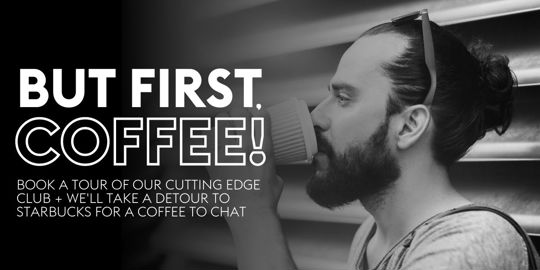SHOULD YOU BE WORKING OUT MORE?
Forget spending hours excessively exercising, we’ve got more evidence that maximising the time you spend working out won’t fast-track your fitness. It’s quality over quantity that gets results.
Now more than ever, there are tons of options for working out. In spite of that, there are now also more obese people, more injured people, more people with body confidence issues. And the answer we hear most often is that we need to work out more, but is that really the case?
A recent study looked at three groups of individuals doing the same workout, varying the speed of the exercise. For example, one group did a chest press for two seconds on the way down and four seconds on the way back up; another group did 10 seconds on the way down, 10 seconds back up. Every group did their workout to momentary failure. The shorter duration exercisers did more reps than the slower exercisers, but all of them spent approximately the same length of time under load (about 90 seconds).
The researchers found no significant difference in strength gains between the three groups, even though the slowest group was only doing 1.5 reps of each exercise. You read that right: ONE AND A HALF reps at 30 seconds each way.
In another study three groups of experienced lifters were put through the same regular workout, with the only difference being the volume of exercise: one group did a single set, the second did three sets, and the third did five sets. They all used a weight that took them to momentary failure after about 8 to 12 reps. The researchers found that all the participants experienced the same strength gains, even though the single set only took about 17 minutes to finish, and the five sets took about 70 minutes to finish.
If you work out to the point of momentary failure, you will get stronger, regardless of how long you work out.
Both of these studies confirm what we’ve known all along: it’s not quantity, it’s quality.
In both studies, the key was reaching momentary failure; if you get to the point where you experience momentary failure, you will experience strength gains, regardless of the length of the workout.
This is one of the reasons our members love Les Mills BODYPUMP.
"During a BODYPUMP workout each muscle group is given anywhere from three to six minutes of isolated work. You'll focus on maintaining perfect technique on every rep and use a weight that takes you to momentary failure." (Ross, BODYPUMP class instructor, Solihull)
"I find that BODYPUMP is one the best ways to maximise my time in the gym. I finish with a cardio cool down to ensure I hit every major muscle group." (Lisa, fan of our BODYPUMP class in Basingstoke)
Try a BODYPUMP class and change up your workout for a stronger, leaner look. Book your BODYPUMP class online or via the app.
Thanks to les Mills for the insight! This piece originally appeared on lesmills.com.


